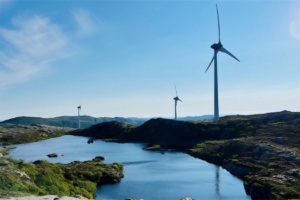Developing new technologies is a vital activity in our ability to combat climate change, and understanding how new technologies will operate in society is an important element of such technological development. In NCS C+, we investigated the socio-political acceptance of the four negative emissions technologies that are being examined by the project, and we identified four key lessons.
The social dimension of negative emissions technologies
Negative emissions technologies, which are technologies that remove and permanently store atmospheric greenhouse gases, can play a critical role in reaching our climate goals. Yet, while negative emissions technologies are increasingly discussed, researched and developed, there is a relatively small body of social science literature on these technologies.
It can be easy to focus solely on the numerous technical challenges that stand before us and forget the social dimensions, especially when technologies are at relatively low technology readiness levels (TRLs), as some negative emissions technologies are. However, as we research and develop new technologies, it is important not to forget that they will need to be implemented in society.
In the NCS C+ (The Norwegian Continental Shelf: A Driver for Climate-Positive Norway) project, we not only research the technological feasibility of four negative emission technologies, but also their social dimensions. As part of this work, we organised a series of three workshops, where we brought together representatives from research, industry, interest organizations, and local government.
The workshops focused on how to achieve negative emissions in Norway as well as the factors impacting the socio-political acceptance of the four technologies studied in the project: (1) converting algae and/or waste bioresources into power, heat, and/or hydrogen with CCS (bioCCS), (2) the removal of carbon dioxide from water (Direct Ocean Capture – DOC), (3) the removal of carbon dioxide from air (Direct Air Capture – DAC), and (4) the removal of methane from air.
Four key lessons on socio-political acceptance
While many important discussions arose during the workshops, four key lessons emerged:
Lesson 1: There needs to be better framework conditions
According to workshop participants, framework conditions (science-based policies, laws, incentives, and regulations) can help to increase leaders’ security in their decision making and decrease problematic indecisiveness.
Lesson 2: Availability and management of resources is a deciding factor
For all four technologies, according to workshop participants, leaders’ ability to prioritize these technologies is impacted by resource availability and use. The energy and area availability, and the energy and area requirements of the technologies, will impact their socio-political acceptance.
For technologies that use sea space, BioCCS and Direct Ocean Capture, workshop participants highlighted that it is not the area that is used by the technologies that impacts leaders’ ability to make decisive decisions per say, but rather the amount of area required that is already used by other ocean industries (e.g., offshore wind power, fisheries, etc.).
Workshop participants also noted that leaders must look ahead in time and as their energy consumption may decrease over time as technological efficiency increases.
Lesson 3: Socio-political acceptance is ‘driven’ by similar factors across the technologies
The factors that impact socio-political acceptance (e.g., area use, availability of energy, etc.) are largely similar across the technologies. This could, perhaps, help to facilitate the political process of implementing these technologies.
When discussing methane removal from air, workshop participants highlighted several additional factors that could impact the socio-political acceptance of the technology. Specifically, they noted that this technology could lose legitimacy, and thereby lack socio-political acceptance, if it is associated with mitigating emissions from specific industries, particularly fossil-fuel based energy production we are currently trying to phase out.
Lesson 4: Support for a top-down approach
Workshop participants placed responsibility on policymakers to create the necessary framework conditions (science-based policies, laws, incentives, and regulations) for facilitating Norway’s transition to negative emissions. More research is needed to investigate whether bottom-up initiatives will also be necessary.
The results of this research have been recently published in Sustainable Production and Consumption. For more information, we encourage you to check out the article: “Investigating the socio-political acceptance of negative emission technologies: A group model building approach”.












Comments
No comments yet. Be the first to comment!